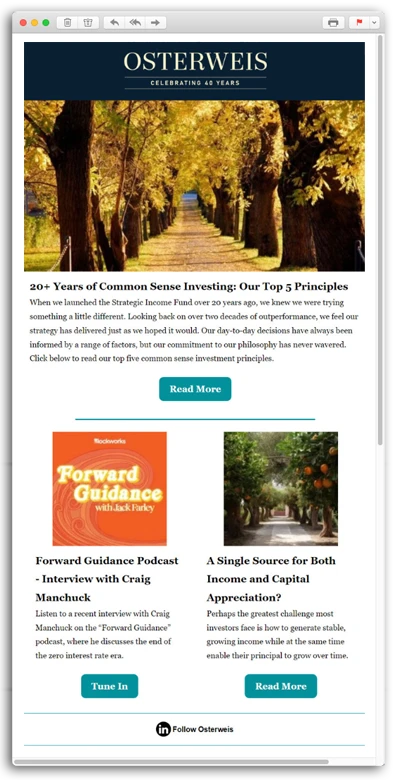The high yield (HY) bond market is heterogeneous. The only real connection among HY securities is that they are rated below investment grade. Otherwise, the market is essentially a collection of individual bond issues. Each one has a unique covenant package, coupon, call schedule, maturity and rating, as well as idiosyncratic factors that influence how it will react to changes in the underlying business.
To help us sort through such a diverse universe, we rely not only on traditional due diligence methods, but also on a market segmentation approach that allows us to assess whether an issue is likely to be a good fit for our portfolio. Historically, we have found that the ownership structure of the issuer has been a reliable indicator of the alignment between the borrower’s incentives and our own.
We divide the HY market into the following four categories:
- Independent private companies
- Small-to-medium sized public companies
- Large public companies
- Financial sponsor-owned leveraged buyouts
In general, we prefer investing in bonds issued by the first two groups – family-owned private and small-to-medium sized public firms. We find they typically borrow responsibly and are committed to repaying their debts, which is of course our priority. We will consider investing in the other two segments, but only when we find bonds that meet our standards.
Our Primary Focus: Private and Small-to-Midsized Public Companies
Over the years we have had a lot of success investing in private companies, particularly family-owned firms, and small-to-medium sized public companies. We have found a few common traits among these two cohorts that we feel are positive differentiators.
Strategic Borrowers
Most importantly, their management teams tend to have a long-term vision and borrow strategically. This means that they do not usually overextend the balance sheet with excessive debt, and they operate with a mantra of being responsible stewards of capital. Family-owned private businesses are particularly interested in sustainable leverage, as they want to ensure multi-generational prosperity.
In addition, both segments tend to issue debt for specific purposes – usually an investment into the business that is designed to increase revenues and profits, ultimately strengthening and/or growing the firm. Likewise, they don’t typically divert bond proceeds to shareholders (as dividends or stock buybacks), which means our investments are deployed productively, rather than providing a one-time windfall to other investors. More mature family-owned businesses do typically pay dividends, but usually from free cash flow.
Improved Due Diligence
We also like these two segments because we generally find the due diligence process is easier, largely because they both provide good access to management. Bonds issued by private firms usually include covenants that require them to host quarterly investor calls and release quarterly results. They also often allow direct communication with executives, which gives us the opportunity to ask tough questions, really get to know management and measure their progress against their long-term strategy. This is extremely helpful as private firms typically have fewer Wall Street analysts covering them to verify their published financial statements.
Smaller public firms also generally grant us access to their executives, in addition to their required quarterly reports and investor calls.
Favorable Market Technicals
Another reason we find opportunity in these two segments is that their bonds are often overlooked by other institutional investors, which reduces initial demand for the issues and can also bring higher yields. Larger investors generally purchase bigger issues, particularly those that are part of the high yield index. Bonds issued by private and smaller public firms don’t typically meet the inclusion requirements for the index, so they are nearly systematically excluded from larger portfolios. This aligns well with our benchmark agnostic approach. Of course, in exchange for the higher returns, we need to do a little extra homework as we cannot rely on a phalanx of Wall Street analysts to do it for us.
Opportunistic Segments: Large Public Companies, Leveraged Buyouts
We generally avoid bonds from large public issuers, as we find they tend to be on the rich side of the market because of their perceived safety, and we are also skeptical of bonds issued by private equity firms. However, we will consider both on a case-by-case basis.
Large Public Bonds – Not Enough Yield
Our main concern with bonds issued by large public companies is that, relative to their smaller brethren, they seldom pay enough to make the investment attractive. The demand for large issues from larger investors helps drive down the yield these companies need to pay to entice buyers. Also, larger public firms have shown a proclivity to use the proceeds to benefit equity holders (as dividends and share buybacks) rather than investing in the business, which makes it much more difficult to analyze whether the proceeds will be used productively. They also frequently issue debt to stockpile cash for unspecified future projects – often because they can, not because there is an immediate need. In general, we find that it is difficult to judge whether a large public issuer is borrowing for the long-term health of the business or just to siphon cash to pay other stakeholders at a future time.
Given this uncertainty, one could reasonably expect yields to be higher than they are. However, because these issues are generally included in the major benchmarks, many index-tracking asset managers are obligated to purchase them regardless of their terms, so they generally yield less than they otherwise should. Lower yields have become an especially acute problem in 2019, as the Federal Reserve has ended its tightening cycle and yields have been dropping across fixed income markets, particularly for higher rated companies. We generally buy these types of bonds only during market slowdowns, when those aforementioned buyers become forced sellers. Being benchmark-agnostic allows us this luxury.
Additionally, large public companies can and do issue bonds with longer maturities, which, combined with their smaller coupons, means that they carry more interest rate and price/spread sensitivity.
Sponsor-Owned Leveraged Buyouts – Too Much Risk
In our experience, this segment tends to have the poorest alignment between the incentives of the borrower and the lender, and as we’ve written previously, we only invest in these bonds selectively. The coupon, maturity, and call protection of sponsor-backed leveraged buyouts (LBOs) tend to be on market, and sometimes even a little better, but a deeper analysis usually reveals a host of other potential problems.
A big concern about LBOs is that the sponsors typically look to pay themselves significant management fees and dividends as soon as possible, increasing the debt burden of the company without transferring any meaningful value to it. In our view, this is not only an unproductive use of the proceeds, but it also tends to boost the acquired company’s leverage ratio well beyond our comfort level.
In addition, in order to push these issues through the high yield market, we find that sponsors frequently utilize liberal accounting practices which appear to make their financials look better than they are. Management teams adjust their current financial results with future revenues and cost saving synergies they hope to realize over time. They ask the market to lend them money today with excess debt loads based on the idea that once the deal goes through, the debt will be the right size for the new and improved company. But if that doesn’t happen, investors are the ones who suffer.
Just as importantly, we typically find LBOs offer the weakest covenant protections in the market. Sponsors use these poor covenants to maximize their control over the acquired firm’s business decisions and revenues, essentially allowing them to divert cash away from bondholders even when debt payments are past due. Many of these bond structures are frequently complex and opaque, which means investors can find themselves in unfavorable situations for which they are not prepared. Additionally, sponsors have been reducing which parts of the company are included as “guarantors,” meaning that when a problem arises, there is much less collateral supporting the bonds.
Conclusion
We are always looking to find the least risky way to participate in what we believe to be the most attractive parts of the fixed income markets. Ensuring that the incentives of our borrowers align with our own is one of the core foundations of our approach, and in our experience, ownership structure is an excellent indicator of an issuer’s commitment to repay its debts.
Craig Manchuck
Vice President & Portfolio Manager – Strategic Income
Opinions expressed are those of the author, are subject to change at any time, are not guaranteed and should not be considered investment advice.
Mutual fund investing involves risk. Principal loss is possible. The Osterweis Strategic Income Fund may invest in debt securities that are un-rated or rated below investment grade. Lower-rated securities may present an increased possibility of default, price volatility or illiquidity compared to higher-rated securities. The Fund may invest in foreign and emerging market securities, which involve greater volatility and political, economic and currency risks and differences in accounting methods. These risks may increase for emerging markets. Investments in debt securities typically decrease in value when interest rates rise. This risk is usually greater for longer-term debt securities. Small- and mid-capitalization companies tend to have limited liquidity and greater price volatility than large-capitalization companies. Higher turnover rates may result in increased transaction costs, which could impact performance. From time to time, the Fund may have concentrated positions in one or more sectors subjecting the Fund to sector emphasis risk. The Fund may invest in municipal securities which are subject to the risk of default.
The Osterweis Funds are available by prospectus only. The Funds’ investment objectives, risks, charges, and expenses must be considered carefully before investing. The summary and statutory prospectuses contain this and other important information about the Funds. You may obtain a summary or statutory prospectus by calling toll free at (866) 236-0050, or by visiting www.osterweis.com/statpro. Please read the prospectus carefully before investing to ensure the Fund is appropriate for your goals and risk tolerance.
Coupon is the interest rate stated on a bond when it’s issued. The coupon is typically paid semiannually.
Maturity is the date on which the life of a transaction or financial instrument ends, after which it must either be renewed, or it will cease to exist.
Call protection is a protective provision of a callable security prohibiting the issuer from calling back the security for a specified period of time.
Leverage ratio is a financial measurement that looks at how much capital comes in the form of debt (loans), or assesses the ability of a company to meet its financial obligations.
Free cash flow represents the cash that a company is able to generate after laying out the money required to maintain and expand the company’s asset base. Free cash flow is important because it allows a company to pursue opportunities that enhance shareholder value.
Osterweis Capital Management is the adviser to the Osterweis Funds, which are distributed by Quasar Distributors, LLC. [41074]


